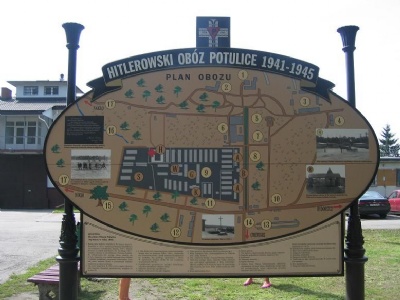Potulice
In 1941, the Nazis established a transit camp for Polish citizens living in the part of Poland called Reichsgau Danzig-Westprussia. These were to be transferred to, for example, the General Government. Later, part of the camp also came under the authority of a unit called, Ostjugendbewahrlager Potulitz, whose task was to assess whether Polish children detained in the camp met Aryan race criteria. The children who met these criteria were then selected for germanization, which meant that they were placed in German families and raised in accordance with Nazi doctrine. Germanization of non-German children was a program led by a division of the SS called RuSHA (Rasse und Siedlungshauptamt). Their task was, for instance, to find, and in the worst case, kidnap children in countries occupied by Germany and place them in German families for germanization. Potulice later became a labor camp and was subordinated Stutthof concentration camp. The conditions can be equated with more well-known concentration camps. It is difficult to estimate how many people were detained in the camp, but a figure mentioned in the museum is 25,000, how many died from these is even more difficult to estimate. After the war, the camp was used by Polish authorities to intern ethnic Germans and about 3,500 Germans died between 1945 and 1950.
Current status: Demolished with monument (2008).
Location: 53°07'32.2"N 17°41'23.3"E
Get there: Car.
Follow up in books: Lukas, Richard C: Forgotten Holocaust: The Poles Under German Occupation 1939-1944 (2008).




In 1950 the camp was demolished and a prsion was built on the site. Just outside the prison where the camp entrance was once located, there is a monument and an information board about the camp. There is an elementary school nearby with an exhibition about the camp in one of the classrooms. This is a budget variant and a local initiative that can be visited in the company of a teacher or other representative of the school.